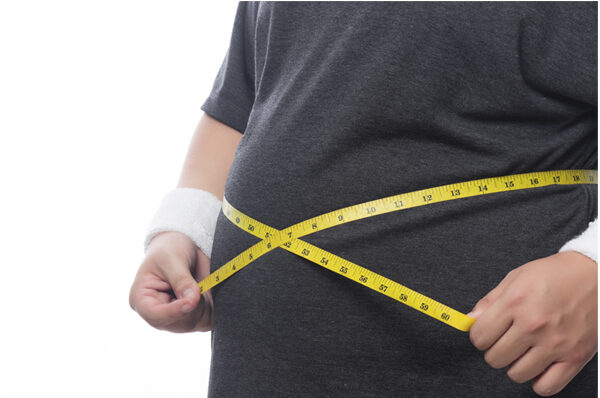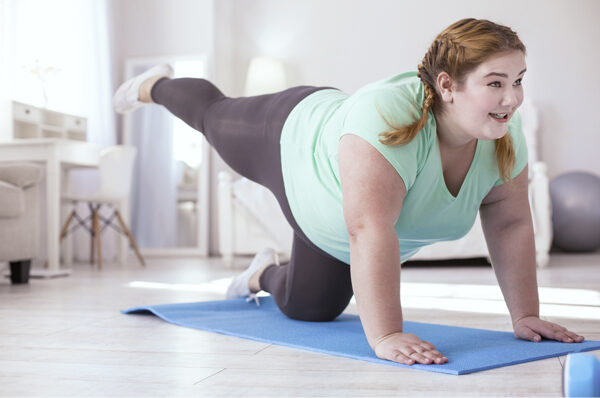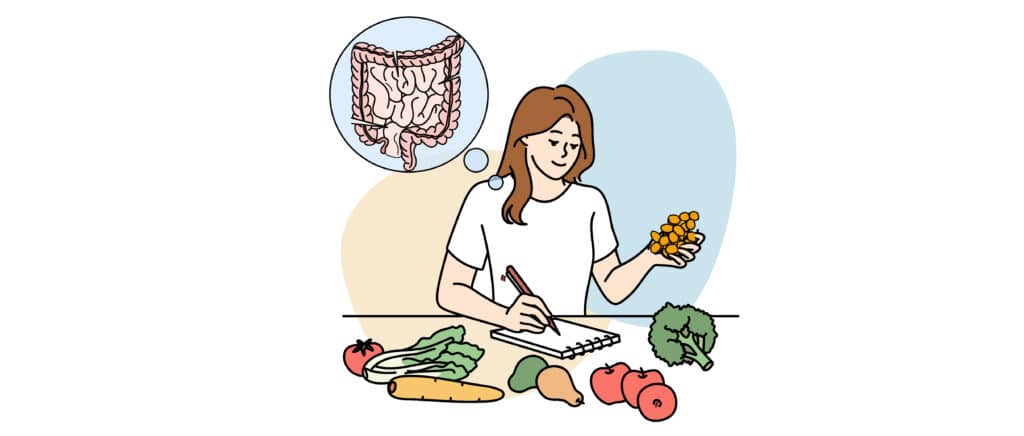How to Counter Obesity Through Physical Activity
- What is Obesity?
- How does exercise help counter Obesity?
- How to counter obesity with exercise?
- How can physical activity be difficult while combating Obesity?
Obesity numbers are growing every year, and most people don’t know how to counter it. With its prevalence that has increased from 30.5% to 42.4% from 1999 to 2018, it is truly alarming. We know that eating well and exercising keeps the body healthy, but it is never as simple as that. We have been constantly bombarded with fast food advertisements, tiresome jobs, and more. It can be difficult to get the recommended amount of daily exercise and healthy meals. So what can we do about it?
What is Obesity?
Obesity is a disease wherein excess body fat has accumulated so much that the person’s health may be negatively affected. What does this mean? Many people all over the world struggle with carrying a larger amount of body weight that puts their body under a lot of stress. This is because one has to work harder to do even the basics of everyday tasks. Struggling with obesity can take a toll on a person physically, mentally, and socially.
The following are the percentages of who (amongst race and age) are struggling the most with obesity:
- African-American adults (49.6%)
- Hispanic adults (44.8%)
- Caucasian adults (42.2%)
- Asian adults (17.4%)
- 20-39 year olds (40.0%)
- 40-59 year olds (44.8%)
- 60+ year olds (42.8%)
Age, gender, and genetics can play a role in potential health problems. It can also be developed or enhanced by obesity as well. This can be scary for a lot of people, but can also serve as a motivator to take care of their health. We do not have control over our genetics but we do have control over the food we eat and how often we move our bodies.
The following is a list of health problems that can come along with obesity:
- Type 2 diabetes causes cells to have insulin resistance. This results in your pancreas working harder. Your blood sugar levels will also spike.
- Heart disease is one of the leading causes of death in Americans. However, this can be prevented if you change your lifestyle.
- Certain forms of cancer have a higher association for those who are obese.
- Respiratory problems arise when one is obese. This involves issues with the lungs, which can lead to difficulty in breathing. In cases like these, oxygen might not be properly carried in the bloodstream.
- Osteoarthritis is a form of arthritis, which primarily targets the hands, hips and knees. It is known for the “wear and tear” it causes on joints.
- Metabolic syndrome is a serious condition that affects obese people. It increases your risk for developing other diseases that affect how the body functions.
- Risk for high blood pressure (hypertension) increases with obesity. It occurs when your blood pressure is consistently higher than it should be, regardless of the activity you are partaking in.
- Sleep disorders are caused by many different diseases. It can cause mental disturbances not only when you’re sleeping, but also while you are driving, at work, and in other situations.

How to counter obesity with exercise?
Exercise is very beneficial for everyone, not just for those struggling with obesity. The daily recommendation of the average adult is to exercise for 60 minutes per day. This ensures that a healthy weight is maintained. For those with obesity, regular activity can help you lose weight. This will reduce the negative effects of being overweight. Other than those listed above, some other important ones to mention are depression, anxiety, and heart attack.
The longer and harder you exercise, the more calories you burn and pounds you lose. Combine this with controlling how many calories you eat, and it will bring along some very positive results to be excited about! In order to lose one pound, you would need to burn about 3500 calories. This can be done by exercising and burning those calories. You may also follow a caloric deficit when eating. Many people will reduce by as much as 500 calories every day in order to lose one pound per week. The most sustainable way is to use both methods to lose weight.
Below are examples of some enjoyable exercises that you can do. It also includes, how many calories the average adult would burn per hour while doing them:
- Moderate Exercises:
- Biking <10 mph: -290 calories
- Dancing: -330 calories
- Hiking: -370 calories
- Light yard/house work: -330 calories
- Stretching: -180 calories
- Walking 3.5 mph: -280 calories
- Weightlifting: -220 calories
- Vigorous Exercises:
- Aerobics: -480 calories
- Basketball: -440 calories
- Biking >10 mph: -590 calories
- Running 5 mph: -590 calories
- Swimming: -510 calories
- Walking 4.5 mph: -460 calories
We recommend starting gradually when you first work out. This is to avoid injury or burnout. Your body needs a bit of time to adapt to regular exercise, and it will love you for it! Just keep in mind that most people lose the most weight at the beginning, if you start out losing 5 pounds per week in your first month, and then 2 pounds per week in the third, don’t be disappointed! Your body is just going through the process, and it is important to keep going!
It is also very important not to use the scale as the only thing determining whether your body is changing for the better. It may say that you are maintaining your weight, or even gaining a few pounds. However, this could mean that you are losing fat while gaining muscle. The best way to determine if you are improving is by taking before and after pictures. Another great way is to see if your clothes slowly become too big for you!
What are some of the best exercises to start with?
Now that you know the benefits of exercising, how do you get started? There are so many exercises out there, and it can be overwhelming. We can keep it simple and go over some of the more simplistic activities that many may enjoy.
Walking is great for everyone because it is part of our daily activities! This means you don’t need extra equipment or instruction. You can create reasonable goals for yourself, either by distance or amount of time. You can then make improvements by adding to this goal every week! If you really want to challenge yourself, slowly add intervals of light jogging in between walking. This will burn a few more calories and further strengthen your cardiovascular system.
Cycling, for most people, will not need extra instruction. However, you will need a bike. You can cycle around the neighborhood or on a trail. You could also do this inside if you have a stationary bike. Many people enjoy going to cycling classes because an instructor may help you burn the most calories possible. The facility will even provide the bike for you. Cycling is also great because it is a low impact activity. As long as you do it right, the chances of you developing an injury is minimal.
Swimming is another no to low impact exercise that many people with obesity partake in. Swimming laps or doing aerobic exercise classes in the pool can help you burn calories. All this while putting no pressure on your joints or feet. You will feel lighter overall, and injuries will be prevented!
While weightlifting may be intimidating for a lot of us, it has many benefits. Cardio exercises alone may not be enough to help you get the body you wish to have. Lifting weights boosts metabolism because it increases your muscle mass. The more muscle you have, the faster you burn calories. The body will also continue to burn calories even after the workout is complete. Weightlifting also strengthens the muscles and tendons, all the while aiding in preventing injury. Injuries of all kinds can prevent you from being able to workout. This might make you gain the weight back. We suggest lifting 3 times a week for 30 minutes a day. If that’s not doable for now, you can work up to it by starting with smaller intervals then slowly increasing over time.
And last but not least, stretching might be the way for you. It is extremely important for your overall health, and it helps prevent injury. Just make sure to be gentle with yourself while stretching. If you push yourself too hard, you can risk straining a muscle.

How can physical activity be difficult while combating Obesity?
A lot of difficulties come along with working out, unfortunately, it’s not just all fun and games. What are these possible problems and how can we combat them?
Some people view exercise as too difficult and not fun. If you can relate to this, it may be best to start out incorporating it in your everyday things. You can try parking further away, compelling you to walk a little further. You can start taking the stairs instead of an elevator, and doing crunches or jumping jacks at home while watching commercials. These may seem like simple tasks but the benefits will surely add up!
The daily recommendation for working out is 60 minutes a day, and that can be overwhelming. This is very understandable. One thing you can try is breaking that 60 minutes up into smaller segments throughout the day. You can try starting the morning with a 20 minute walk. Do a 20 minute workout video you can find on the internet later on in the day, and then finish it off with a 20 minute stretching session before bed. You can also try listening to music or podcasts to keep you entertained while you are moving!
You may be motivated during the first week then over time start to wonder if it’s even worth it. Plenty of people experience this, but there are ways to fight those thoughts of giving up. Try working out first thing in the morning when you have the most energy. If you do this, you won’t be able to tell yourself that you are too tired to workout later in the day. You can also hold yourself accountable by having a workout partner or a group class you need to show up for. The most important thing overall is to make sure you’re doing activities you enjoy!
Everyone is at a risk for obesity, no matter your race, gender or age. What matters most is what we do about it. There are techniques and workouts that might work best for you individually. Remember that there is no workout plan that fits everyone. Now is your time to experiment with different physical activities, so that you can see what you enjoy the most while also being sustainable. Once you get in the flow, exercise can be very enjoyable and will contribute to a long and healthy life.
We thank you so much for taking the time to expand your knowledge by reading this article. We want to remind you that it is important to consult your doctor before making any important changes that could impact your health.
Summary
Obesity is a disease wherein excess body fat has accumulated so much that the person’s health may be negatively affected. It also links to hypertension, diabetes, and respiratory problems. But, no need to worry because getting fit and eating right are the best solutions to obesity, especially when results are already visible!
Scientific Information
- Aerobics – involves regular body part (e.g. arms or legs) movements that increase workload on the cardiovascular system.
- Insulin Resistance – defined as a condition in which there is a lack of capacity of the hormone to bind to its receptors and signal the physiological responses expected
- Metabolic Syndrome – defined by a cluster of interconnected components characterized by abdominal obesity, hypertension, dyslipidemia, insulin resistance, and glucose intolerance that directly increase the risk of coronary heart disease, other forms of cardiovascular atherosclerotic disease, and diabetes mellitus type 2.
- Osteoarthritis – is a degenerative process involving all of the major joint tissues, including articular cartilage, synovium, and subchondral bone.









